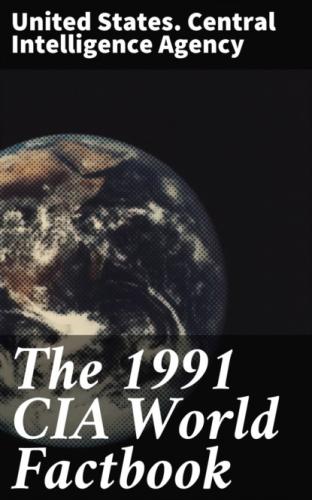_#_Flag: three equal horizontal bands of black (top), red, and green with the national coat of arms superimposed on the hoist side of the black and red bands; similar to the flag of Malawi which is shorter and bears a radiant, rising red sun centered in the black band
_*Economy #_Overview: Fundamentally, Afghanistan is an extremely poor, landlocked country, highly dependent on farming (wheat especially) and livestock raising (sheep and goats). Economic considerations, however, have played second fiddle to political and military upheavals, including the nine-year Soviet military occupation (ended 15 February 1989) and the continuing bloody civil war. Over the past decade, one-third of the population has fled the country, with Pakistan sheltering about 3.3 million refugees and Iran about 1.3 million. Another 1 million have probably moved into and around urban areas within Afghanistan. Large numbers of bridges, buildings, and factories have been destroyed or damaged by military action or sabotage. Government claims to the contrary, gross domestic product almost certainly is lower than 10 years ago because of the loss of labor and capital and the disruption of trade and transport.
_#_GDP: $3 billion, per capita $200; real growth rate 0% (1989 est.)
_#_Inflation rate (consumer prices): over 92% (1990 est.)
_#_Unemployment rate: NA%
_#_Budget: revenues $1.2 billion; expenditures $4.3 billion, including capital expenditures of $306 million (FY91 est.)
_#_Exports: $236 million (f.o.b., FY90);
commodities—natural gas 55%, fruits and nuts 24%, handwoven carpets, wool, cotton, hides, and pelts;
partners—mostly USSR and Eastern Europe
_#_Imports: $874 million (c.i.f., FY90 est.);
commodities—food and petroleum products;
partners—mostly USSR and Eastern Europe
_#_External debt: $2.3 billion (March 1991 est.)
_#_Industrial production: growth rate 8.1% (FY91 plan); accounts for about 25% of GDP
_#_Electricity: 480,000 kW capacity; 1,470 million kWh produced, 100 kWh per capita (1989)
_#_Industries: small-scale production of textiles, soap, furniture, shoes, fertilizer, and cement; handwoven carpets; natural gas, oil, coal, copper
_#_Agriculture: largely subsistence farming and nomadic animal husbandry; cash products—wheat, fruits, nuts, karakul pelts, wool, mutton
_#_Illicit drugs: an illicit producer of opium poppy and cannabis for the international drug trade; world's second-largest opium producer (after Burma) and a major source of hashish
_#_Economic aid: US commitments, including Ex-Im (FY70–89), $322 million; Western (non-US) countries, ODA and OOF bilateral commitments (1970–88), $465 million; OPEC bilateral aid (1979–89), $57 million; Communist countries (1970–89), $4.1 billion
_#_Currency: afghani (plural—afghanis); 1 afghani (Af) = 100 puls
_#_Exchange rates: afghanis (Af) per US$1—586 (March 1991)
_#_Fiscal year: 21 March-20 March
_*Communications #_Railroads: 9.6 km (single track) 1.524-meter gauge from Kushka (USSR) to Towraghondi and 15.0 km from Termez (USSR) to Kheyrabad transshipment point on south bank of Amu Darya
_#_Highways: 21,000 km total (1984); 2,800 km hard surface, 1,650 km bituminous-treated gravel and improved earth, 16,550 km unimproved earth and tracks
_#_Inland waterways: total navigability 1,200 km; chiefly Amu Darya, which handles steamers up to about 500 metric tons
_#_Pipelines: petroleum, oil, and lubricants pipelines—USSR to Bagram and USSR to Shindand; natural gas, 180 km
_#_Ports: Shir Khan and Kheyrabad (river ports)
_#_Civil air: 2 TU-154, 2 Boeing 727, 4 Yak-40, assorted smaller transports
_#_Airports: 40 total, 36 usable; 9 with permanent-surface runways; none with runways over 3,659 m; 10 with runways 2,440–3,659 m; 17 with runways 1,220–2,439 m
_#_Telecommunications: limited telephone, telegraph, and radiobroadcast services; television introduced in 1980; 31,200 telephones; stations—5 AM, no FM, 1 TV; 1 satellite earth station
_*Defense Forces #_Branches: Army, Air and Air Defense Forces, Special Guard/National Guard, Border Guard Forces, National Police Force (Sarandoi), Ministry of State Security (WAD), Tribal Militia
_#_Manpower availability: males 15–49, 4,049,092; 2,171,757 fit for military service; 166,135 reach military age (22) annually
_#Defense expenditures: $450 million, 15% of GDP (1990) % @Albania *Geography #_Total area: 28,750 km2; land area: 27,400 km2
_#_Comparative area: slightly larger than Maryland
_#_Land boundaries: 768 km total; Greece 282 km, Yugoslavia 486 km
_#_Coastline: 362 km
_#_Maritime claims:
Continental shelf: not specified;
Territorial sea: 12 nm
_#_Disputes: Kosovo question with Yugoslavia; Northern Epirus question with Greece
_#_Climate: mild temperate; cool, cloudy, wet winters; hot, clear, dry summers; interior is cooler and wetter
_#_Terrain: mostly mountains and hills; small plains along coast
_#_Natural resources: crude oil, natural gas, coal, chromium, copper, timber, nickel
_#_Land use: arable land 21%; permanent crops 4%; meadows and pastures 15%; forest and woodland 38%; other 22%; includes irrigated 1%
_#_Environment: subject to destructive earthquakes; tsunami occur along southwestern coast; deforestation seems to be slowing
_#_Note: strategic location along Strait of Otranto (links Adriatic Sea to Ionian Sea and Mediterranean Sea)
_*People #_Population: 3,335,044 (July 1991), growth rate 1.8% (1991)
_#_Birth rate: 24 births/1,000 population (1991)
_#_Death rate: 5 deaths/1,000 population (1991)
_#_Net migration rate: 0 migrants/1,000 population (1991)
_#_Infant mortality rate: 50 deaths/1,000 live births (1991)
_#_Life expectancy at birth: 72 years male, 79 years female (1991)
_#_Total fertility rate: 2.9 children born/woman (1991)
_#_Nationality: noun—Albanian(s); adjective—Albanian
_#_Ethnic divisions: Albanian 90%, Greeks 8%, other 2% (Vlachs, Gypsies, Serbs, and Bulgarians) (1989 est.)
_#_Religion: all mosques and churches were closed in 1967 and religious observances prohibited; in November 1990 Albania began allowing private religious practice and was considering the repeal of the constitutional amendment banning religious activities; estimates of religious affiliation—Muslim 70%, Greek Orthodox 20%, Roman Catholic 10%
_#_Language: Albanian (Tosk is official dialect), Greek
_#_Literacy: 72% (male 80%, female 63%) age 9 and over can read and write (1955)
_#_Labor force: 1,500,000 (1987); agriculture about 60%, industry and commerce 40% (1986)
_#_Organized labor: Central Council of Albanian Trade Unions, 610,000 members
_*Government #_Long-form name: Republic of Albania
_#_Type: nascent democracy with strong Communist party influence; basic law has dropped all references to socialism
_#_Capital: Tirane
_#_Administrative
